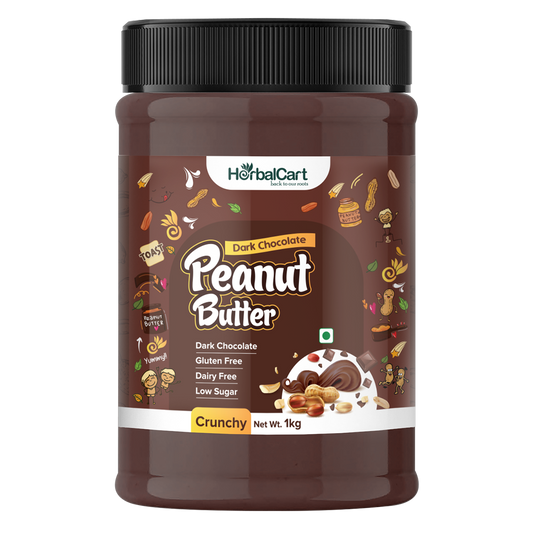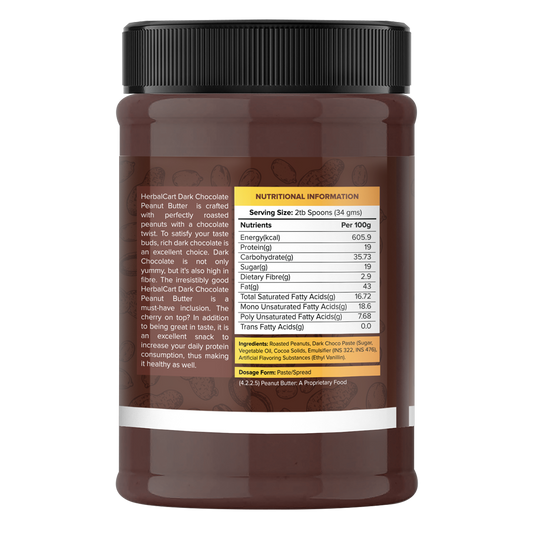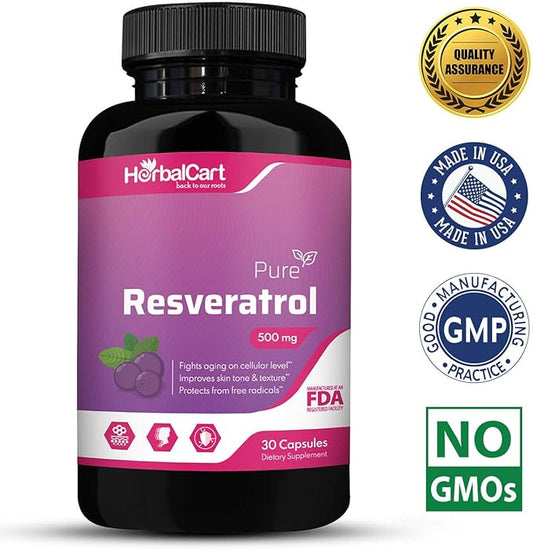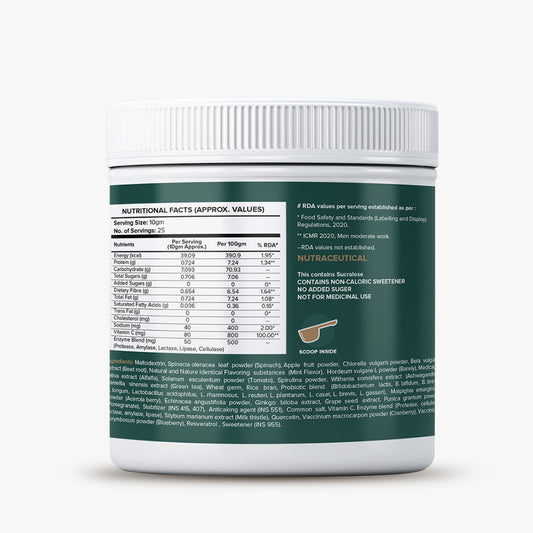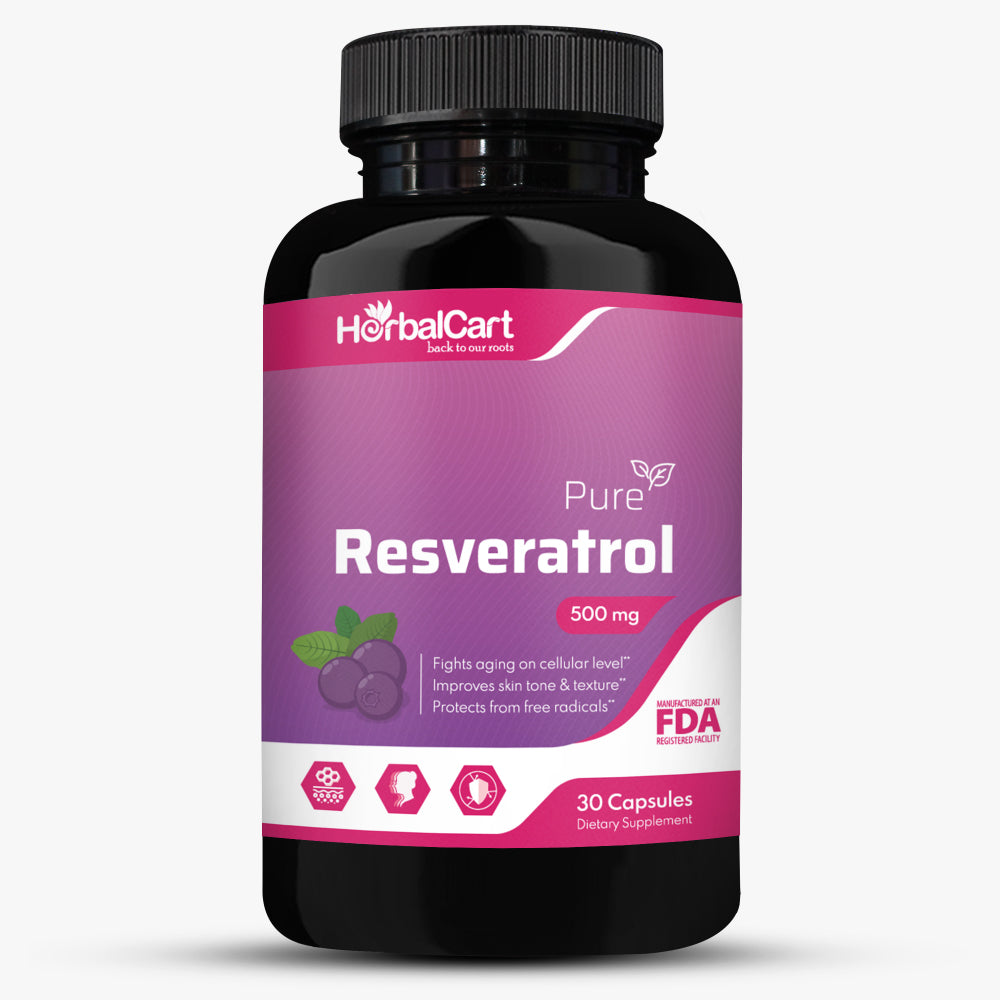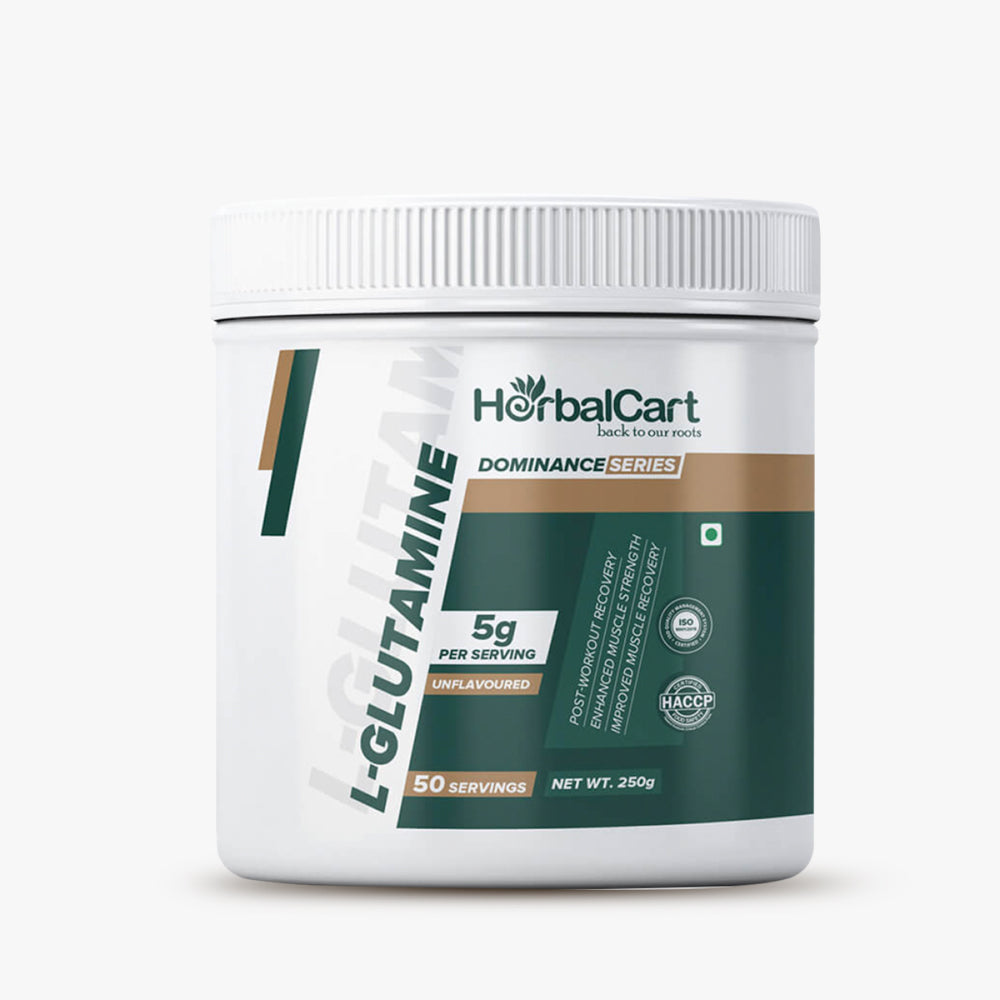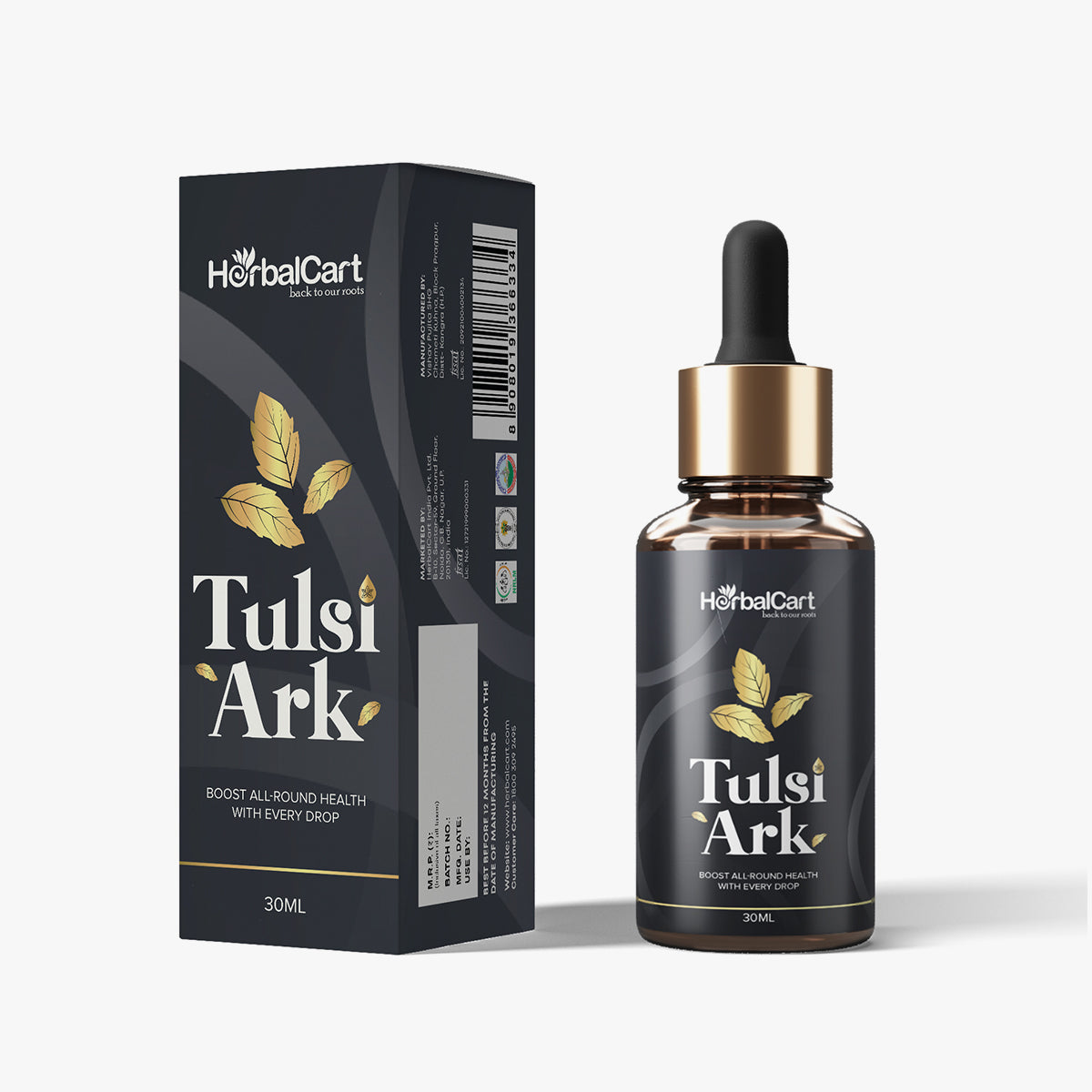If you've ever asked yourself how to transform your delightful fresh herb garden into a year-round flavor machine, you're in the proper place. There's no denying the deeply satisfying act of growing your herbs and preserving them for months of culinary adventures. Whether you're the seasoned pro or the beginning herb grower, this exhaustive guide will take you by your garden-gloved hand and introduce you to the best method for how to grow herbs indoors, the magic that is companion planting, but most importantly, how to dry herbs at home to ensure they maintain all of their body-boosting properties.
What Are Herbs? Understanding Your Green Gold
Before we get into the nitty-gritty of preserving herbs, let's start at the beginning. What are herbs, exactly? In the culinary realm, herbs refer to some plants' tender, leafy greens. We use them to add flavor, aroma, and often color to our dishes. Unlike spices, which are usually derived from seeds, bark, or roots, herbs are all about the aromatic leaves.
Consider basil's sweet, peppery notes, rosemary's pine-emanating fragrance, or thyme's earthy complexity. These plants are favored in the kitchen and have been cherished for their healing properties for centuries. So today, we're leaning into the kitchen, showing you how to turn a bounty of herbs into a shelf-stable seasoning that will up your culinary game.
The appeal of herbs is their essential oils, the aromatic compounds that make your kitchen smell gorgeous when you cook with fresh basil or mash garlic and rosemary. When we discuss how to dry herbs correctly, we're talking about preserving these essential oils without the extra moisture that could lead to spoilage.
How to Grow Herbs Indoors: Your Winter Flavor Factory
Anybody who has ever grown herbs indoors will tell you it is one of the most satisfying gardening adventures. In addition to having fresh herbs at your disposal, you will also ensure a constant supply for your herb-drying projects. Here is how to cultivate your indoor herb paradise.
Light Requirements
Indoor Herb gardening success begins with knowing your plants' light needs. Many herbs are sun-worshippers and need 4-6 hours of full sun daily. Plus, if you don't have a sunny south-facing window, don't worry, LED grow lights can do wonders. Hang them 6-12 inches above your plants and keep them 14-16 hours daily.
Container Selection and Soil
With containers, it's all about drainage. Choose pots with drainage holes and use a good-quality potting mix, not garden soil. Garden soil is too dense for pots and doesn't drain well, which can cause root rot, which is the bane of indoor gardening.
Best Herbs for Beginners
If you're just starting, try these fail-safe indoor herbs: basil, mint, parsley, chives, and oregano. These varieties are also forgiving and quick-growing, so you get instant gratification to keep you going. Basil, in particular, loves heat and will take off in a sunny windowsill; mint is so wannabe invasive that you may want to keep it in its pot to prevent it from trying to take over, like Ivana Trump.
Temperature Control
Temperature consistency is very important for indoor herbs. Most suit temperatures are between 65-75°F during the day and a few degrees cooler at night. Don't situate them near heating vents or drafty windows, where temperature fluctuations may stress the plants.
Watering Tips
It's watering where so many indoor gardeners go astray. Most herbs like to dry out a bit between drinks. Stick a finger about an inch into the soil; if it's dry, it's time to water. When you do water, go all out: give plants a good drenching until water runs out of the holes at the bottom of the pot, then empty the saucer under it to keep plants from sitting in standing water.
What Herbs Can You Plant Together? A Guide to Companion Planting
Learning what herbs grow well together is akin to understanding the social dynamics of the plant world. Some herbs are good companions; they help each other grow, develop flavor, ward off pests and disease, and generally make for potful of the harmonious and the tasty, but some like their aloneness.
Mediterranean Herb Combinations
Mediterranean herbs are great bedfellows as they require the same growing conditions. Rosemary, thyme, oregano, and sage all love well-draining soil and don't mind that it's a little on the dry side. Those herbs concentrate their flavors better if you don't overpamper them with water or rich soil.
Basil Partnerships
Basil has quite a few curious relationships in the herb world. It was also the classic tomato companion vegetable, and the two are still famously associated in the pasta sauce and out in the garden. Basil can be a good repellent against pest problems that attack tomatoes, and tomatoes can offer basil some afternoon shade in the hottest climates. However, basil does not get along with rue or other Mediterranean herbs, so this is something to consider when planning your herb garden.
The Mint Situation
Let's talk briefly about mint, because it's the garden equivalent of that one friend who talks over everyone else. Mint is rampant with runners, under the ground and on top, and it's generally best to grow it, even in an herb garden, in a pot of its own. If you plant mint in the ground, take steps like barriers or a buried pot to contain its vigorous growth.
Other Good Combinations
Since parsley and chives are good companions, you kill two birds with one stone. Parsley is an excellent companion plant for beginners, and chives share the same watering preferences and can be harvested all season long. As a bonus, chives have beautiful purple flowers that are just as tasty as the leaves and bring helpful insects to your garden.
As you plan your companion plantings, consider when harvest will occur. Crops such as cilantro and dill can grow quickly, which means they can be interplanted with more sedate growers like rosemary. This lets you make the most of garden space and guarantees a consistent supply for your herb-drying projects.
How to Dry Fresh Basil: Preserving Seasonal Flavor
How do you dry fresh herbs so they taste the best and you can keep them around for a while? Drying herbs removes moisture while retaining the essential oils, giving herbs flavor and aroma.
Timing Your Harvest
Timing is key when it comes to picking herbs to dry. The best time to pick them is in the morning when the dew has dried, but before the day's heat. That's when the oil content is the greatest. Most herbs are best picked right before they flower to have the most concentrated flavor, but a few spices, like oregano, will still taste good when fully bloomed.
Preparation
Before drying, rinse your herbs and gently pat them dry completely. Any moisture left can result in mold during the drying process, ruining your entire batch. Remove any damaged, diseased, or yellowing leaves; only the top-quality herb should go into the drying process.
Air Drying Method
The old air-drying technique is perfect for herbs with relatively low moisture content, including rosemary, thyme, oregano, and sage. Stem several small handfuls (10-15 stems together) and secure with rubber bands or twine. Tie these mounds together upside down and in a warm and dry place that gets plenty of air but is not in direct sunlight. The Perfect environment temperature should be around 70-80°F, with good air circulation.
For herbs with higher moisture content, such as basil, mint, and parsley, air drying can cause discoloration and flavor loss. Most of these herbs are best dried quickly to retain their color and medicinal properties.
How to Dry Your Herbs in the Oven: Fast and Efficient!
Learning how to dry herbs in the oven extends the opportunity to preserve herbs throughout the year, whatever the weather. This works well for greener herbs or when you need dry herbs sooner rather than later.
Temperature Control
The secret to a successful drying in the oven is a slow oven and patience. Preheat your oven on its lowest setting: this should be about 170°F, though some ovens go lower. If your oven won't dial down that low, crack it open and wedge it with a wooden spoon so that excess humidity escapes and it doesn't get too hot.
Process
Prepare your herbs by removing stems and spreading the leaves on parchment-lined cookie sheets. Do not crowd; air must circulate evenly for drying. More delicate herbs, such as basil and cilantro, may take 1-2 hours, while tougher ones like rosemary or sage can be used for 3-4 hours.
Every 30 minutes, check your herbs and give them a light flip to help them dry evenly. They should be done when the leaves crush easily between your fingers, but not to the point that they crumble into dust. If your herbs are brown or black, their color should be pretty vibrant; your temperature was too high.
Pro Tip
Pro tip for oven drying: If you have a convection setting, go with that. The circulating air also makes the moisture evaporate faster and can decrease drying time. Keep an eye on brittle herbs, which may dry out faster than you'd like.
How to Dry Herbs at Home, and Other Things to Do With Stems and Stalks
In addition to oven drying, there are plenty of other strategies for drying herbs at home, each with pros and cons that suit your herbs, climate, and equipment.
Dehydrator Method
Food dehydrators are created to remove moisture but may retain nutrients and flavors. Use your dehydrator's lowest setting (95-115°F) for herbs, as higher temperatures will release some of the essential oils that give herbs their flavor. Drying time ranges from 2 to 12 hours, depending on the herb and leaf thickness.
Microwave Method
If you're in a hurry, you can also dry parsley in the microwave, albeit in small batches. Layer clean, dry herb leaves between paper towels and microwave in 30-second increments at medium power (stopping frequently to check). This technique is best with small-leafed herbs, although you'll need to keep a close eye to avoid scorching.
Screen Drying
The screen drying technique is excellent for large quantities or when you want to dry whole leaves. Drying screens should be made with old window screens or cheesecloth stretched over frames. Place the herbs in single layers on the screens and turn occasionally until they are dried. This is an excellent approach for dry climates or properly ventilated rooms.
Desiccant Method
For those living in a humid environment, consider using the desiccant method. Tip: Prune and store herbs in sealed containers with some silica gel packets or dry rice to absorb excess moisture. This technique does take longer, but it will be effective when air drying isn't an option because of high humidity.
Storage and Usage: How to Keep Your Dried Herbs
How you store dried herbs is key to preserving their taste. When thoroughly dried, strip leaves from stems and store in airtight containers in a cool, dark location free from heat and moisture. You can use glass jars with tight-fitting lids, but vacuum-sealed bags are great for more long-term storage.
Labeling and Shelf Life
Label everything with the herb name and the date they were dried. Well dried and stored in a cool, dark place, herbs can retain good quality for 1-3 years, but they're at their peak flavor in year one. Check potency by crushing a little into powder; you should still feel the jasmine-y smell.
Cooking Tips
When cooking with dried herbs, remember that they are more concentrated than fresh. As a rule of thumb, use one-third the quantity of dried herbs as fresh. Add dry herbs earlier in your cooking process to help develop their flavor and infuse your dishes.
Storage Best Practices
Since flavors can leach into a shared container, keep distinct herbs in separate containers. Store your dried herbs in a cool, dark place, such as a pantry or cupboard, away from the stove, where heat and steam can deteriorate their quality over time.
Common Drying Problems and Their Solutions
Even experienced herb dryers can run into trouble. The drying temperature was too high if your herbs turn brown or dark. Lower the temperature or reduce the drying time in your next batch. Mold can develop if herbs aren’t dried completely or are stored in damp conditions. To prevent this, ensure herbs are fully dry before storage. Use moisture absorbers in your containers to keep them dry in humid areas.
Dried herbs with no flavor: If your dried herbs have no taste, they were probably harvested at the wrong time or dried at too low a temperature. Harvest herbs at their strongest potency levels (often mid-morning), then dry out as quickly as possible under cool temperatures.
Over-dried herbs: Herbs that crush to powder while drying are probably too dry or too old when harvested. Look for leaves that crumble instead of disintegrate entirely, and pick younger, more tender growth when you can.
Establishing the Herb-Drying Flow
Establishing an effective herb-drying program begins with planting your garden with preservation in mind. Plant a good supply of each type of herb to use fresh during the growing season and enough to dry for later use. Succession planting, planting new crops every few weeks, makes for a steady harvest throughout the growing season.
Keep Detailed Records
Record what is most successful with each herb variety in your growing conditions. Record when you harvest, how you dried it, and the storage outcome, so you never have to risk your precious harvests again. Some gardeners choose to schedule the processing of herbs on certain days of the week. By doing this, vast amounts of herbs don't pop up, and there is not enough energy to process them, and they are all processed.
Invest in Quality Storage
Splurge on good storage containers and labeling products. There's nothing worse than beautiful dried herbs that lose their potency because you haven't stored them well, or mystery herbs that you somehow have forgotten the name of months later.
Conclusion: The Path to Becoming a Herb Expert
Remember, every master was once a beginner. Your first batch of dry-farmed herbs might not be perfect, but they are better than any store-bought ones. Each successive attempt will impart more information about timing, temperature, and technique. With experience, you'll get a feel for when herbs are ready to harvest, which drying technique works best for each type, and how they should be stored for optimal longevity.
Nothing is more gratifying than reaching into your pantry mid-winter and bringing out a jar of home-grown, perfectly dried basil or oregano. You're not simply preserving herbs, you're keeping the spirit of your garden, the essence of the whole summer flavor, and self-sufficiency itself. Happy growing and drying!






